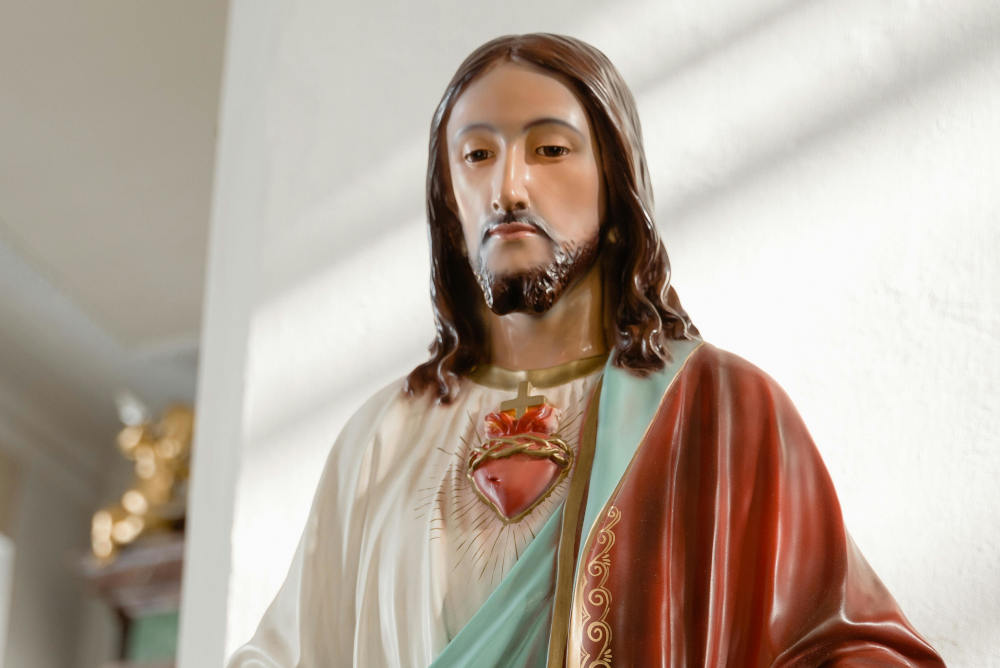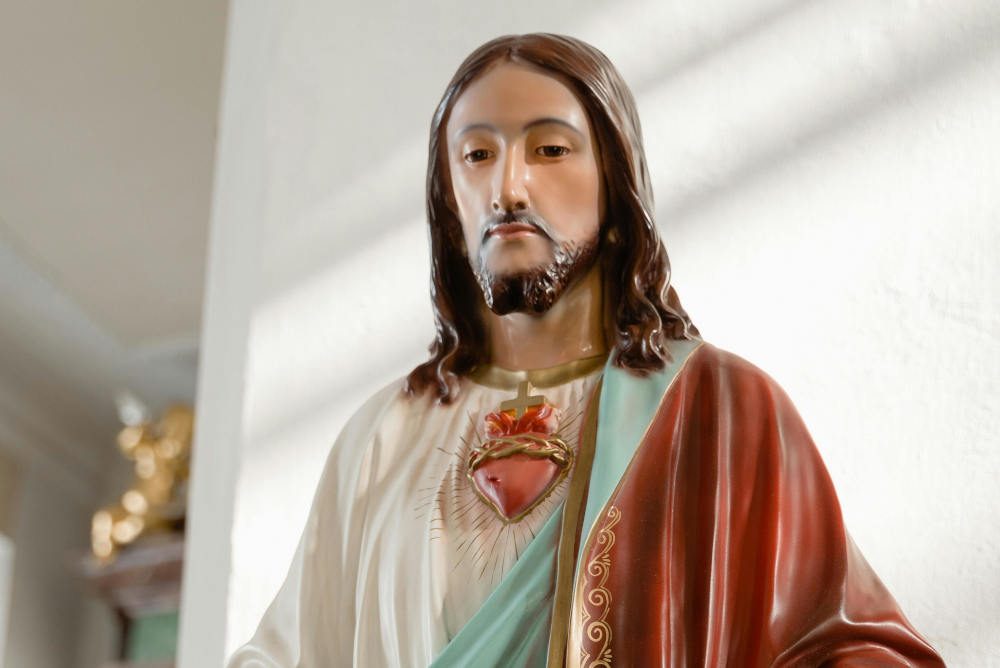
At first glance, the Bible and shamanism might seem to inhabit entirely different worlds. One is the foundational text of Judaism and Christianity, rooted in monotheism and linear history; the other, a widespread pre-religious spiritual practice focused on animism, altered consciousness, and healing. Yet, when examined closely through the lenses of anthropology, psychology, and comparative religion, striking similarities emerge. Biblical figures often act like shamans—mediating between worlds, engaging with spirits, healing the sick, and receiving visions in altered states. This article explores the parallels between shamanism and the Bible and what they reveal about the human spiritual experience.
Panaprium is independent and reader supported. If you buy something through our link, we may earn a commission. If you can, please support us on a monthly basis. It takes less than a minute to set up, and you will be making a big impact every single month. Thank you!
What Is Shamanism?
Shamanism is one of humanity’s oldest spiritual systems, practiced by indigenous cultures around the globe for tens of thousands of years. A shaman is a spiritual mediator—someone believed to travel between physical and spiritual realms, often through trance states, to gain insight, perform healings, or restore balance.
Key features of shamanism include:
-
Spiritual journeys or “soul flights” to the heavens or underworld
-
Direct communication with spirits, deities, or ancestors
-
Healing of physical, emotional, or spiritual ailments
-
Use of altered states of consciousness through drumming, fasting, or plant medicine
-
Initiation through suffering, illness, or near-death experience
Unlike organized religion, shamanism is typically decentralized, experiential, and embedded in the natural world.
The Bible and Spiritual Mediation
While the Bible does not use the term “shaman,” many biblical figures function as spiritual mediators in ways that resemble shamanic roles. Prophets, visionaries, and healers often:
-
Enter altered states (dreams, trances, visions)
-
Travel spiritually to heavenly realms
-
Speak with divine beings or angels
-
Perform healings or miracles
-
Return with divine knowledge or instructions
Let’s look at some of the key examples.
Biblical Figures With Shamanic Characteristics
1. Moses
Perhaps no figure better embodies the shamanic archetype in the Bible than Moses. He speaks with God in a burning bush, ascends Mount Sinai, fasts for 40 days, and returns with divine commandments. His face glows with divine energy (Exodus 34:29), a clear symbol of his spiritual transformation.
Moses also performs signs and wonders:
-
Turning his staff into a serpent
-
Parting the Red Sea
-
Drawing water from a rock
-
Calling down manna from heaven
These acts resemble the miraculous powers attributed to shamans who manipulate nature and channel divine forces.
2. Elijah and Elisha
Elijah calls down fire from heaven, multiplies food, and raises the dead—miracles echoing traditional shamanic healers. In 2 Kings 2, he ascends to heaven in a whirlwind accompanied by a fiery chariot, a classic example of a visionary or mystical ascent.
Elisha, his successor, performs even more miracles—purifying water, healing leprosy, and reviving a child. These actions mirror the shaman’s role as a spiritual doctor and community guide.
3. Ezekiel
Ezekiel's visions are among the most elaborate in the Bible. He sees wheels within wheels, strange angelic beings, and is transported in spirit to Jerusalem (Ezekiel 1–11). This "spiritual journey" is not unlike a shamanic soul flight, often used to gain divine perspective or heal collective imbalance.
He also lies on his side for extended periods, eats strange food, and performs symbolic actions—all consistent with shamanic ritual behaviors meant to channel cosmic messages.
4. Daniel
Daniel receives dreams and visions, interprets omens, and interacts with celestial beings. His trance-like states, fasting, and communication with angelic messengers like Gabriel are directly comparable to the shaman’s journey into the spirit world to obtain divine counsel.
Dreams and Trances: Common Ground
In both shamanism and the Bible, dreams and visions are a key method of receiving spiritual messages. Numerous biblical figures—Joseph, Jacob, Solomon, and the prophets—receive critical revelations through dreams.
-
Jacob dreams of a ladder reaching to heaven, with angels ascending and descending (Genesis 28:12).
-
Joseph interprets Pharaoh’s dreams, guiding Egypt through famine (Genesis 41).
-
Peter receives a trance vision about clean and unclean foods, changing Christian dietary law (Acts 10).
These dream-visions guide entire communities, just as shamans’ visions do in tribal contexts. They are seen as legitimate channels of divine communication.
The Wilderness as Sacred Space
Both shamans and biblical prophets retreat into nature—mountains, deserts, caves—to undergo transformation. The wilderness becomes a sacred testing ground, a place of divine encounter.
-
Moses receives his call in the desert.
-
Elijah hides in a cave and hears the “still small voice.”
-
Jesus fasts for 40 days in the wilderness, tempted by the devil but emerging spiritually empowered.
This spiritual isolation mirrors the shaman’s initiation: withdrawal from society, confrontation with suffering or death, and return as a healer or guide.
Healing and Exorcism
The New Testament abounds with healing stories that resemble shamanic practices. Jesus and his disciples heal the blind, cure lepers, and cast out demons. These are not just symbolic miracles—they mirror traditional roles of shamans as healers of body, mind, and spirit.
-
Mark 5 tells of Jesus healing a man possessed by many spirits (Legion). Jesus speaks directly to the spirit, commands it, and restores the man to sanity—a process strikingly similar to a shamanic exorcism.
-
Acts 5:15 describes people hoping Peter’s shadow would heal them, suggesting a belief in his spiritual presence as a healing force, not unlike the aura of a powerful shaman.
Ritual Tools and Sacred Acts
Biblical and shamanic practices often include ritual objects and symbolic actions:
-
Staffs and Rods: Moses and Aaron use staffs imbued with divine power, much like shamanic tools.
-
Incense and Anointing Oil: Used in tabernacle rituals and for healing, these correspond to shamanic use of herbs and smoke for spiritual cleansing.
-
Music and Chanting: King David plays the harp to drive away an evil spirit from Saul (1 Samuel 16), reflecting the use of music as a healing and spiritual tool.
These elements, though differently contextualized, show deep symbolic resonance between traditions.
Spiritual Beings and Otherworldly Realms
In shamanic traditions, the world is inhabited by spirits—benevolent, malevolent, ancestral, or elemental. The Bible also acknowledges a populated spiritual cosmos:
-
Angels and archangels
-
Demons and unclean spirits
-
Heaven, Sheol, and the heavenly courts
-
Satan appearing before God in Job 1
-
Revelation’s vivid otherworldly visions, complete with beasts, trumpets, and cosmic battles
This multidimensional worldview is central to both systems, with humans acting as participants in this spiritual drama.
Warnings Against “Sorcery” and Spirit Mediums
It’s worth noting that the Bible also explicitly forbids certain practices that resemble shamanism:
-
“Do not turn to mediums or necromancers” (Leviticus 19:31)
-
“You shall not permit a sorceress to live” (Exodus 22:18)
-
“There shall not be found among you…a charmer or a consulter with familiar spirits” (Deuteronomy 18:10–11)
These passages are often cited as evidence that the Bible rejects shamanism outright. However, context matters.
Biblical writers condemned practices that sought power apart from God, particularly in idolatrous or exploitative contexts. Yet they made space for prophets, dreamers, and healers who spoke on God’s behalf. The issue wasn’t spiritual contact per se—but the source and purpose of that contact.
Interpreting the Parallels
So what do we make of all this? Are biblical figures shamans in disguise?
Not exactly. The Bible is rooted in a monotheistic framework, with spiritual experiences interpreted through a relationship with one God. Shamanism, by contrast, often involves multiple spirits and a cyclical worldview tied to nature.
However, the parallels suggest a universal human pattern: in times of crisis or calling, individuals undergo spiritual transformation, enter altered states, and return with messages for the community. Whether we call them prophets, mystics, saints, or shamans, the archetype is remarkably consistent.
Conclusion
While shamanism and the Bible arise from different cultural and theological worlds, they share deep structural similarities. Biblical prophets and healers functioned in ways strikingly parallel to shamans—engaging with spiritual realms, healing the sick, performing miracles, and acting as divine messengers.
These similarities don't mean the Bible is a shamanic text, but they do highlight a shared spiritual heritage. Across time and culture, humans have sought connection with the divine through dreams, visions, ritual, and personal transformation.
Understanding these connections allows for a deeper appreciation of the Bible’s mystical dimensions and enriches our understanding of humanity’s enduring spiritual quest.
Was this article helpful to you? Please tell us what you liked or didn't like in the comments below.
About the Author: Alex Assoune
What We're Up Against
Multinational corporations overproducing cheap products in the poorest countries.
Huge factories with sweatshop-like conditions underpaying workers.
Media conglomerates promoting unethical, unsustainable products.
Bad actors encouraging overconsumption through oblivious behavior.
- - - -
Thankfully, we've got our supporters, including you.
Panaprium is funded by readers like you who want to join us in our mission to make the world entirely sustainable.
If you can, please support us on a monthly basis. It takes less than a minute to set up, and you will be making a big impact every single month. Thank you.































0 comments